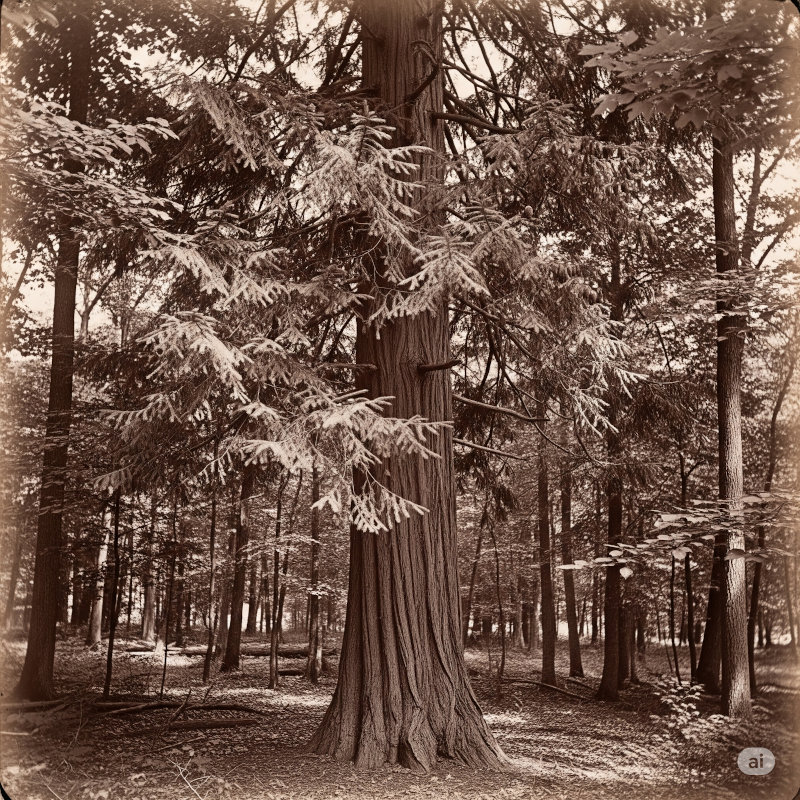Eastern Hemlock (Tsuga canadensis) in New York, 1870–1900

Scope: Hemlock’s dual role as a bark resource for tanneries and as a structural softwood in the pre-chainsaw era.
I. Distribution & Significance
Hemlock blanketed cool slopes and ravines across the Catskills and Adirondacks and mixed with northern hardwoods elsewhere. In the late 1800s it underpinned a major tanning industry while also supplying rough construction lumber across mill towns and farmsteads.
II. Bark Economy & Forest Practices
- Tannins: Thick, tannin-rich bark was peeled in spring when it “slipped” easily; corded bark fed local tanneries.
- Logging pattern: In some districts, bark value drove harvest timing; logs were sometimes underutilized early on, later milled more consistently as markets matured.
- Labor: Bark peelers, teamsters, and mill crews formed seasonal workforces centered on spring/summer bark and winter logging.
III. Wood Characteristics
- Moderately light, somewhat brittle across the grain; good nail-holding.
- Works adequately with hand tools; knots can be frequent in second-growth.
- Durability fair-to-good when kept dry; less decay-resistant than chestnut or white oak.
IV. Common Uses (1870–1900)
| Application | Rationale | Notes |
|---|---|---|
| Barn & outbuilding framing | Abundant, economical | Often rough-sawn, minimally dressed |
| Sheathing, subfloor, roof boards | Local mills, ready supply | Excellent for painted surfaces |
| Bridging, temporary works | Cost-effective | Chosen over pine when price/supply favored |
| Tannery bark (primary value) | High tannin content | Drove spring bark peeling cycles |
V. Harvest Logistics Pre-Chainsaw
- Winter felling with axe and crosscut; spring bark peeling on felled stems.
- Horse/ox teams to landings; short hauls to steam/water mills common.
- Rail expansion spread hemlock lumber into urban yards at competitive prices.
VI. Age & Stand Structure
Merchantable hemlock ranged widely in age—often 80–160 years in mixed stands, with older trees on sheltered slopes. Slow-grown hemlock produced dense ring structure and better stability, though builders still treated it as a rugged, economical species best suited to framing and sheathing rather than fine millwork.
Preservation Tip
Historic hemlock framing remains sound when kept dry and well-ventilated; decay risk rises in damp basements and sill conditions—locations where period builders often preferred chestnut or white oak instead.
